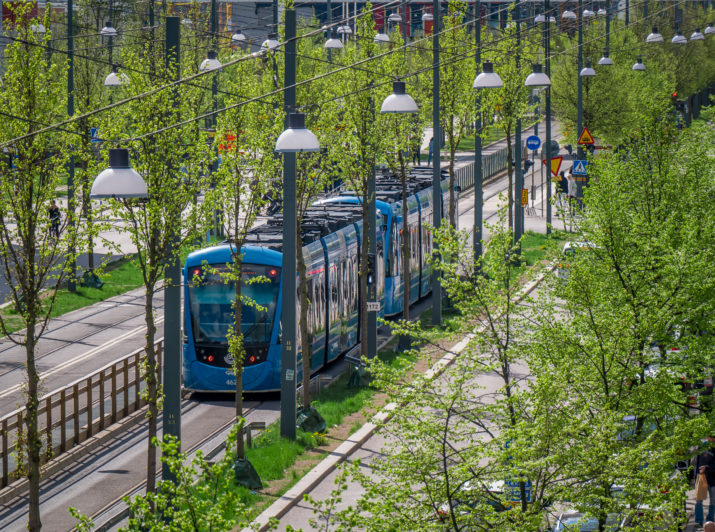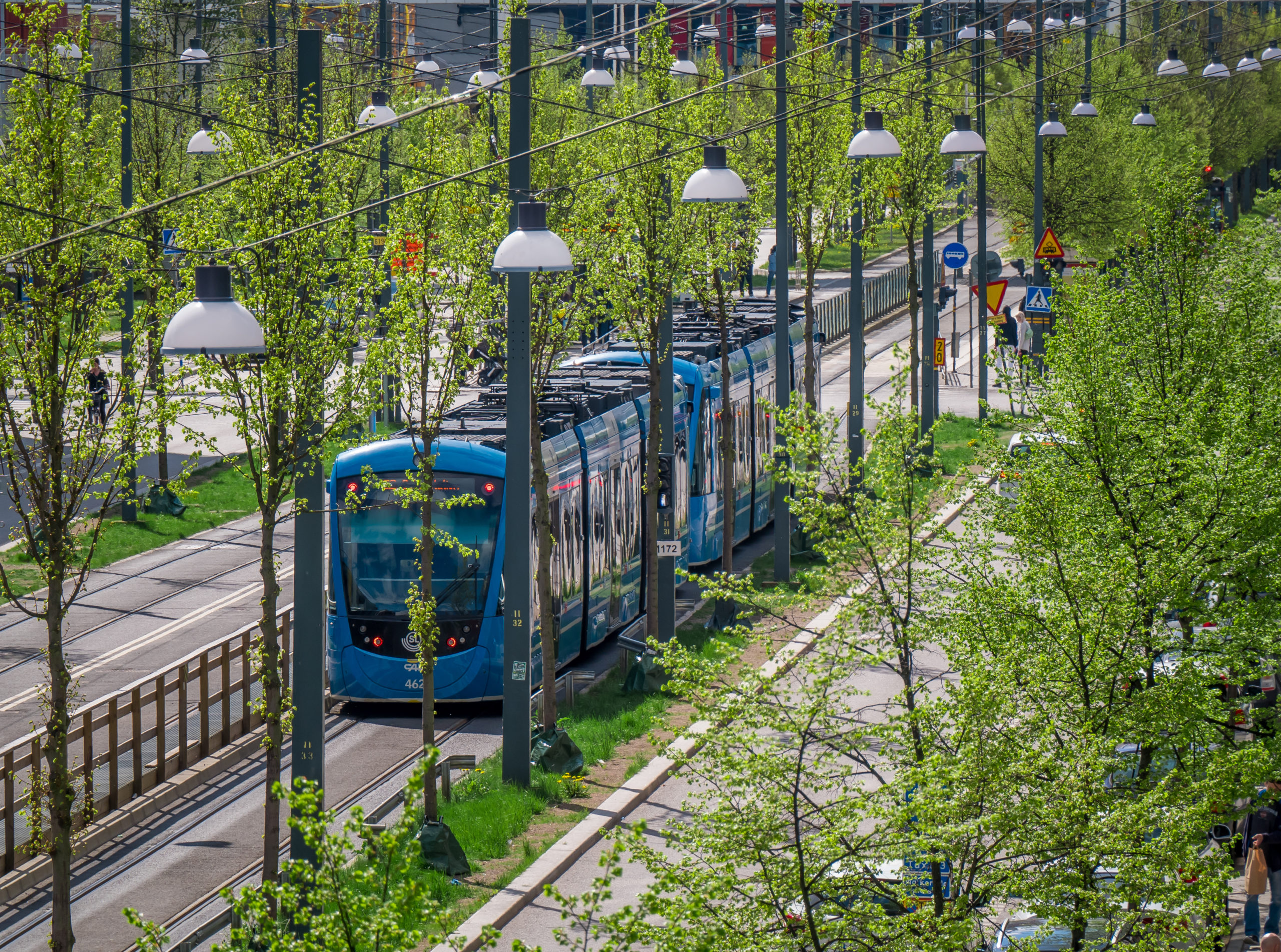

This is part of our special feature, The Frontlines of Environmental Politics in Europe.
Cities are the closest governmental level to the cause and solution of environmental and sustainability problems. However, when questioning who should bear the most in facing environmental challenges such as climate change, we tend to think about international organizations, states, or citizens. But what about cities? How much can local actors contribute to making urban and rural areas more resilient and active in mitigating and adapting to environmental and sustainability challenges?
The involvement of cities in the globalization era has been widely discussed (Sassen 2001; Brenner 2004; Castells 2010; Bouteligier 2016; Curtis 2016). Cities stand out in their ability to cooperate with each other effectively. They are also quick to identify the needs of their citizens and implement initiatives in comparison with higher levels of government (Hoornweg et al. 2011). Therefore, they are best positioned to be effective actors in the endeavour of facing climate change and other global problems.
There are two arguments that I would like to make here. One relates to the relevance of cities in a globalized world and how they interact in international relations in the face of sustainability challenges, and the other relates to the ability of cities to rapidly forward changes. Both are important for having a broader picture of the role of local actors in the promotion of sustainability and environmental action.
Cities and networking in a globalized era
Problems such as climate change, poverty, access to food and energy, migrations, pandemics, or pollution can hardly be solved only by national governments or only by international organisations. Challenges as polyhedral, complex, multifaceted, and wicked as climate change and the loss of biodiversity can only be approached from multilevel stances with as much coordination as possible, while leaving space for creativity in the identification of solutions. In the area of climate change, indeed, there are already evidences that local governments may be doing more than national states in the search for and the implementation of mitigation and adaptation measures (Ljunkgkvist 2016; Gordon & Johnson 2017), partly due to their ability to identify local problems and their flexibility in the implementation of solutions.
Cities have been part of international relations for centuries, playing a central role in the promotion of their economy, society, and culture. We have seen how some cities quickly unfold their resources during critical moments, such as the welcoming of refugees and migrants in Barcelona or Berlin. Michele Acuto identifies that the involvement of mayors in international action is the result of the need and the will to be engaged with a challenging global context filled with transnational concerns (Acuto2016). Indeed, the emergence of transnational challenges can be identified as an excellent opportunity for cities to participate in global governance, increasing the number of actors involved in international environmental action.
In the last decades, the participation of cities in global governance has increased and has taken place through different channels. Cities have directly participated in international forums such as the UN Habitat conferences, and they have also engaged with other cities in transnational municipal networks (TMN) with the aim of sharing experiences and learning from each other. This growing visibility and involvement of cities in dealing with transnational concerns has given local actors substantial leverage to increase their influence on national governments (Fraundorfer 2017).
One of the first and most active TMN focused on environment and sustainability is ICLEI – Local Governments for Sustainability, launched in 1990 with currently more than 2,500 local and regional governments of more than 125 countries. The C40 Cities Climate Leadership Group (C40), the United Cities and Local Governments (UCLG), and the Climate Alliance are other examples of how cities are interacting at the global level in the search for responses and solutions to global threats for communities all over the world. Since 2008, the former EU Covenant of Mayors (CoM), now Covenant of Mayors for Climate and Energy, has been able to mobilize European municipalities and build on their potential to reduce greenhouse gas (GHG) emissions and support the delivery of the climate goals adopted by the EU Member States. The reduction of greenhouse gases, the improvement of energy efficiency, and the identification of adaptation measures are all initiatives being implemented at the local level that will complement global climate action.
At the time of writing, there are 10,931 signatories to the CoM covering more than 337 million inhabitants from 54 countries. Although most signatories are from EU countries, the CoM has also been signed by municipalities in third countries such as Turkey, Mexico, and Brazil. Compared with other city networks that work on urban climate governance, the CoM is one of the most successful in terms of membership numbers and global reach (Ruiz-Campillo, 2020). Participating cities in this network have access to technical support, guidelines, and information, and have the possibility of attending meetings and forums on funding and financing opportunities. Previous research has also identified that cities joining this specific network value the international visibility, the cities’ international profiles, and the possibilities of strengthening the cooperation within the network that the CoM offers them (Domorenok et al. 2020). Thus, cities do not only want to be involved in global governance, but also want their efforts to be recognized by transnational organizations and their citizens.
Within these networks, by sharing their knowledge, experiences, and practices, cities contribute to shaping identities, norms, and expectations, and thus diffuse policy (Wendt 1995; Finnemore and Sikkink 1998), both vertically and horizontally. In fact, some of these TMN have increasing power in environmental governance (Fraundorfer 2017), driven by their ability to find common grounds of understanding and to promote their solutions among other cities and at the global level. An example can be found by examining the 2020 pandemic crisis, when cities within the C40 network rapidly agreed on the need to use the economic recovery to invest more in health and the environment, which would later contribute to reducing GHG and creating millions of green and sustainable employments (C40 2020a). Another example is the commitment of twelve large cities to withdraw public investments from fossil companies and increase them in the green economy (C40 2020b). These cities therefore showed leadership by proving that this type of divestment is not only feasible but essential during a time of even more need for climate action such as the pandemic. These types of actions, following Paul Fenton and Henner Busch, play a key role in vertical governance, showing national governments “what is possible,” therefore becoming tools for the promotion of certain policies and providing needed pressure from cities and municipal networks (Fenton & Busch 2016).
Cities and the multiplication of changes
Cities are in a privileged position to undertake changes that can impact the lives of their populations at very different levels. They have the competences to engender changes and practices in areas that resonate in others, thus expanding and multiplying their benefits.
One of the classic examples of the above is Bogotá. During the terms of Antanas Mockus and Enrique Peñalosa between 1995 and 2003, the city witnessed an insurmountable transformation. With the aim of ameliorating mobility, ex-Mayor Peñalosa established one of the world’s most advanced and efficient bus rapid transit systems—known as the Transmilenio—(Ardila 2004; Cervero 2013; Kent 2016; Ferbrache 2019) and launched the construction of hundreds of kilometres of bicycle lanes uniting low-income and wealthy regions. For almost a decade, urban planning became central to the city: public parks were built, car use was restricted, sidewalks were repaired and built, and public libraries were built on the outskirts (Martin and Ceballos 2005; Kalandides 2011). But not only did Bogotanos gain better infrastructures that promote sustainable mobility and decongest the city from cars, there were additional changes. A recent study on the motivations of cyclists and other athletes identified that the construction of bicycle lanes led many Bogotanos to use them for exercise, saving time and money (Rodriguez-Valencia et al. 2021). This is a finding that makes sense considering that cycling and other forms of exercise tend to increase with bike lanes, since it provides a safe space for people near the roads (Gu et al., 2017; Che et al., 2012). Indeed, Bogotá experienced a great increase in the number of riders, from less than 1 percent in 1996 (JICA 1996) to 6.6 percent in 2019 (SDM 2019).
Stockholm can provide an example of how the promotion of sustainable urbanization can impact other areas of people’s lives. The neighborhood of Hammarby Sjöstad transformed industrial land into an attractive residential area, made water and sewage more efficient, fostered ecological responsibility among residents, improved mobility, and reduced energy and clean water consumption (Poldermans 2005; Fränne 2007). Apart from decontaminating the soil where it was built, the way this area was urbanized reduced the need for private cars; it improved owners’ economy by reducing water, waste, and energy maintenance and costs; and waste storage was taken from outside of the buildings to leave space for other uses, such as bicycle racks and playgrounds (Jernberg, Hedenskog and Huang 2015).
Many cities in the world, like Barcelona, are improving their energy efficiency as a way to face climate change. The impact of focusing on energy efficiency goes above and beyond: apart from reducing the GHG emissions, it reduces dependence on fossil fuels, especially if the city opts for generating local renewable energy. This can be done through the use of solar energy systems in public buildings (libraries, schools, sports facilities), the use of more efficient electrical devices, heaters, and light bulbs, the installation of motion detectors, the improvement of insulation (double glazed windows, double doors, awnings), or the use of more efficient public lighting.
Apart from reducing energy dependence, promoting energy efficiency in the residential sector also helps advance both economic growth and climate action, and has particularly high economic and social returns (Ruiz-Campillo, 2020). Energy efficiency contributes to reducing local pollution, improving health and well-being, job creation, energy savings both at the public and private level, and better energy prices that benefit all (IEA 2014; Payne, Weatherall & Downy 2015). Moreover, savings from the electricity bill can be used to improve other public services, such as education, health, or culture. Every dollar invested in efficiency in low-income households through public programs results in more than $2.5 in benefits for a community (Schweitzer 2005).
The last example of how action in one area can resonate in others is Paris. In 2015, the city adopted a sustainable food plan with different aims: to give access to sustainable food to everyone, increase autonomy and food resilience, prevent food waste, and promote networking and partnerships (Mairie de Paris 2018). Some of the strategies to achieve these aims are the deployment of mobile grocery stores in neighbourhoods lacking sustainable local food stores, the promotion of urban and peri-urban agriculture in private and public areas, encouraging the opening of bulk stores so that consumers can use their own packaging, and the organization of culinary workshops to diffuse knowledge (Mairie de Paris 2018). This plan focused on sustainable food has multiple effects: it minimizes the pressure on the environment with the reduction of food waste and the promotion of ecological products, therefore benefitting biodiversity; it supports the maintenance of jobs in farming, agriculture, and local stores; it fosters health by reducing the rate of obesity and by reducing the exposure to chemicals on farmland; and it reduces food inequality by demanding that food sellers donate a part of their surplus food to the existing 130 food redistribution centers (C40 2019).
Cities are active in interrelating and networking with peers in order to share practices and initiatives to make cities greener and more sustainable. The fact that they are the closest public administration to citizens gives them the ability to select their policies wisely, in a way that the benefits are diffused and multiplied. Obviously, cities are not governed in isolation, and they do not have all the competences to do everything they would want. They can share experiences with other cities, but they need to interrelate vertically with higher stances of government from whom they get most of their budgets, and horizontally with other departments of the municipality to adjust those budgets. Involving private and nongovernmental actors is also important to overcome resource constraints of local governments and to identify needs and solutions (Pasquini et al. 2021).
Without finance, information, and other resources (e.g. analytical skills, time, technical and logistical support), climate change and other related environmental and sustainability challenges seem difficult to address. The way cities collaborate, exchange knowledge, and implement clever policies can be an example to other governmental levels, where individual interest and procrastinating the adoption of bold policies to face these sorts of problems have been the rules for decades. What seems clear is that inaction in an area so important for the wellbeing of the citizens as is the environment and the promotion of sustainability could well equal political irresponsibility. As it will undoubtedly be detrimental to everyone if we do not change our ways, thinking and acting in accordance with the global commons and for the common good in the twenty-first century is a must.
Xira Ruiz-Campillo holds a doctorate in International Relations, and is lecturer of Global Environmental Regimes at the Faculty of Political Sciences (Complutense University of Madrid, Spain). Her research interests include climate diplomacy, cities as international actors, the relation between climate and security, and European security.
References
Acuto, M. 2016. “An Urban Affair: How Mayors Shape Cities for World Politics.” In The Power of Cities in International Relations, edited by S. Curtis: Routledge.
Bouteligier, S. 2016. “A Networked Urban World. Empowering Cities to Tackle Environmental Challenges.” In The Power of Cities in International Relations, edited by S. Curtis: Routledge.
Brenner, N. 2004. New State Spaces: Urban Governance and the Rescaling of Statehood: Oxford University Press.
C40. 2019. Cities100: Paris is boosting local food production for an equitable food system. C40 Knowledge.
C40. 2020b. Divesting from Fossil Fuels, Investing in a Sustainable Future Declaration, in https://www.c40.org/divest-invest
C40 2020a. Technical report: The case for a green and just recovery. C40 Cities.
Castells, M. 2010. The Rise of the Network Society. Second edition: Wiley-Backwell.
Che, L., Chen, C., Srinivasan, R., McKnight, C., Ewing, R. and Roe, M. (2012). “Evaluating the Safety Effects of Bicycle Lanes in New York City”. American Journal of Public Health, June; 102 (6): 1120-1127.
Curtis, S. 2016. Global Cities and Global Order: Oxford University Press.
Domorenok, E., Acconcia, G., Bendlin, L., Ruiz-Campillo, X. “Experiments in EU Climate Governance: The Unfulfilled Potential of the Covenant of Mayors”. Global Environmental Politics, 20(4), p. 1-22
Fenton, P. & Busch, H.. 2016. “Identifying the ‘usual suspects’ —Assessing patterns of representation in local environmental initiatives”, Challenges in Sustainability, 4 (2).
Finnemore, M., & K. Sikkink. 1998. “International norm dynamics and political change.” International Organization, 52(4): 887-917.
Fränne, L. 2007. Hammarby Sjöstad – a unique environmental project in Stockholm, GlashusEtt, Alfaprint: Stockholm.
Fraundorfer, M. 2017. “The role of cities in shaping transnational law in climate governance.” Global Policy 8(1): 23-31.
Gordon, D., & C. Johnson. 2017. “The orchestration of global urban climate governance: conducting power in the post-Paris climate regime.” Environmental Politics 26(4): 694-714.
Gu, J., Mohit, B., & Muenning, P. 2017. “The cost-effectiveness of bike lanes in New York City”. Injury Prevention, 23: 239-243.
Hoornweg, D., L. Sugar, & C. L. Trejos Gómez. 2011. “Cities and Greenhouse Gas Emissions: Moving Forward.” Environment and Urbanization 23(1): 207-227.
IEA. 2014. Capturing the multiple benefits of energy efficiency. OECD/IEA.
Jernberg, J.; Hedenskog, S.; Huang, CC. 2015. Hammarby Sjöstad. An urban development case study of Hammarby Sjöstad in Sweden, Stockholm. China Development Bank Capital, Green & Smart.
JICA, 1996. Estudio del Plan Maestro del transporte urbano en Santa Fé de Bogotá. Informe final. Japan Internacional Cooperation Agency.
Ljunkgkvist. 2016. “The Global City. From strategic site to global actor”, en S. Curtis, The Power of Cities in International Relations: Routledge.
Mairie de Paris. 2018. Paris Strategy for Sustainable Food. Summary.
Martin Schweitzer. 2005. Estimating the National Effects of the U.S. Department of Energy’s Weatherization Assistance Program with State-level Data. Oak Ridge National Laboratory.
Pasquini, L.; Petrik., D.; Nyamakura, B., et al. 2021. “Effective collaborative climate change governance in urban areas”. In Carrillo, F. J. & Garner, C., City Preparedness for the Climate Crisis: Edward Elgar Publishing.
Payne, J.; Weatherall, D.; Downy, F. 2015. Capturing the “multiple benefits” of energy efficiency in practice: the UK example. ECEEE. London.
Poldermans, C. 2005. Sustainable Urban Development. The case of Hammarby Sjöstad. University of Stockholm, Institute of Human Geography.
Rodriguez-Valencia, A., Rosas-Satizabal, D.; Unda, R.; Handy, S. 2021. “The decision to start commuting by bicycle in Bogotá, Colombia: Motivations and influences”. Travel Behaviour and Society 24: 57-67.
Ruiz-Campillo, X. 2021. “The EU Covenant of Mayors: Boosting local climate action for the EU’s green transition”. In Abdullah, Hannah (ed.), Towards a European Green Deal with Cities. The urban dimension of the EU’s sustainable growth strategy. CIDOB.
Ruiz-Campillo, X. 2020. “When fighting climate change leads to better cities: A study of actions implemented by 100 cities in Spain”. In Leal Filho W., Nagy, G., Borga, M. Chávez, P., Magnuszewsk, A. (eds). Climate Change, Natural Hazards and Adaptation Option: Handling the impacts of a changing climate: Springer.
Sassen, S. 2001. The Global City: New York, London Tokyo: Princeton University Press.
SDM, 2019. Encuesta de Movilidad 2019. Secretaría Distrital de Movilidad.
Wendt, A. 1995. “Constructing International Politics.” International Security 20(1): 71-81.
Published on May 18, 2022.




